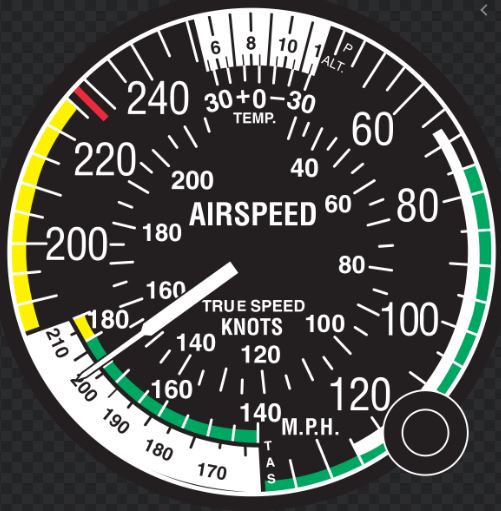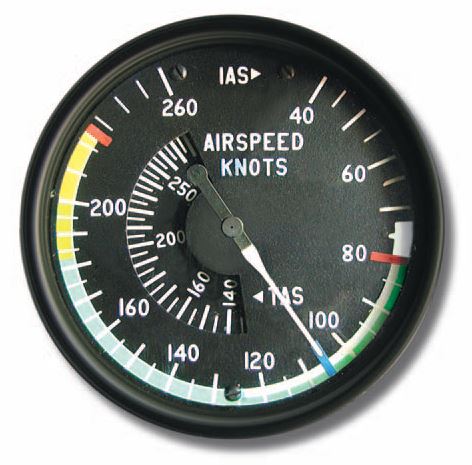For the beginner pilots, this is a very important topic to understand once they start their flight training.
To understand TRUE AIRSPEED:
It is the actual speed of the aircraft through airmass. Since you can not actually see the air molecules, you can think of the speed of the airplane in relation with the clouds at your altitude. Another way, to define, True airspeed is actually the calibrated airspeed (CAS) corrected for different altitude and different temperature. Because, temperature generally decreases with altitude increases and air molecules also become less dense at higher altitude.

To understand INDICATED AIRSPEED (IAS):
It is the direct instrument reading and subject to instrument errors, driven by aircraft’s pitot-static system.

WHY INDICATED AIRSPEED AND TRUE AIRSPEED ARE DIFFERENT?
As an aircraft climb at higher altitude, True Airspeed gets higher than it’s Indicated airspeed. It is because your Airspeed Indicator does not measure the speed of the aircraft, it measures the outside pressure by the air molecules.
This is why your IAS is less than your TAS as altitude increases and density decreases. Student pilots normally calculate TAS using flight computer (E6B).
WHY DO WE NEED TO CALACULATE TRUE AIRSPEED?
If pilots use IAS to calculate their flight time from one place to another, their flight time and fuel burns estimates will be very far from the actual estimates.
HOW DO PILOTS CALCULATE TRUE AIRSPEED?
There are a few methods to estimate your TAS. Most popular way is to use your E6B flight computer. First, you need to find out Calibrated Airspeed using Indicated airspeed from your Pilot operating handbook (POH). Then, you can calculate TAS using the CAS, Temperature and Pressure altitude.
One of the other methods, I teach my students, to get the true airspeed add 2% for each 1000’ altitude “
ex. Indicated airspeed at 9,000’ is 110 knots.
9 x 2% = 18%
18% of 110 knots is 19.8/20 knots
true airspeed : 110 knots + 20 = 130 knots
WHAT HAPPENS WITH TRUE AIRSPEED (TAS) WHEN AIRCRAFT FLY AT VERY HIGH SPEED?
Our flight computer to compute TAS works well below 100 knots. As aircrafts fly at very high speed, one of the most common problem pilot faces COMPRESSIBILTY.
At speed below 100 knots, the air molecules pass easily around the pitot tube. But as speed increases, air Infront of the pitot tube starts to compress and gives inaccurate Calibrated airspeed. Considering the compressibility factor to CAS, the pilot can compute Equivalent airspeed (EAS). At ISA conditions or sea-level, EAS and CAS are the same speed but at higher altitudes, EAS will be less than CAS. The difference between CAS and EAS is negligible, while Pilot flying below 10,000 altitudes with less than 200 knots. This is the reason when flying high performance very fast aircraft, pilots need to calculate for Mach number, which solves compressibility as a factor.
AUTHOR
Capt. Anwar Parvez
